All’s Fair in Vanessy
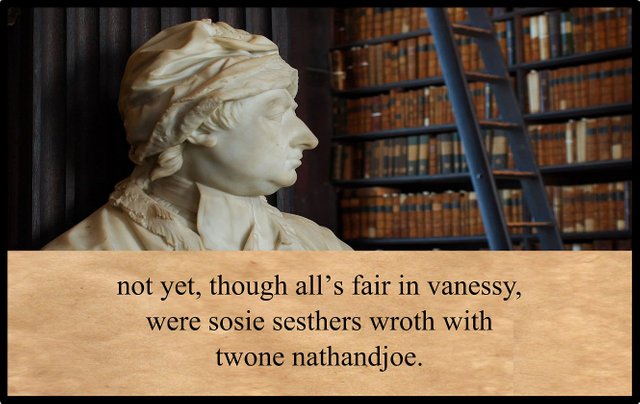
It is hard to break a good habit. In the fifth clause of paragraph two of Finnegans Wake, James Joyce once again blends Biblical imagery with Irish history, just as he did in the two previous clauses. This is already clear in the first-draft version of this passage, which reads:
not yet had twin sesthers played siege to twone Jonathan. (Hayman 46)
The second-draft added to this a constellation of allusions drawn mainly from English literature:
not yet & all’s fair in vanessy were sosie sesthers wroth with twone jonathan. (Hayman 46)
This went through one more draft before Joyce hit upon the published version:
not yet, though all’s fair in vanessy, were sosie sesthers wroth with jonathan. (Tim Finnegan)
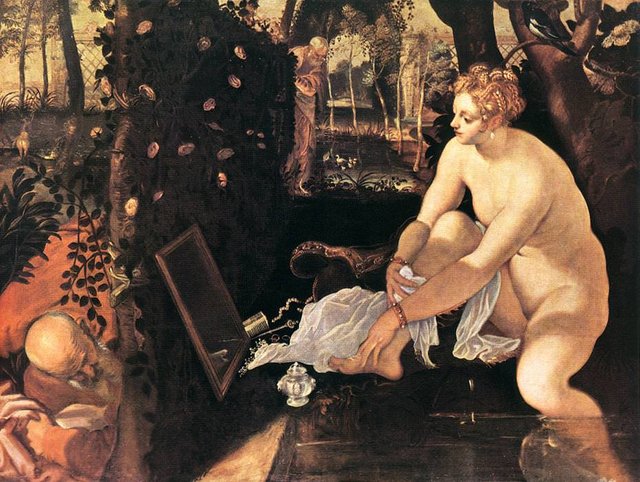
Susannah, Esther and Ruth
The Biblical elements in this clause are not too hard to discern. Campbell and Robinson briefly noted them in their Skeleton Key of 1944:
“Sosie sesthers wroth” is also a transformation of the names of Susannah, Esther, and Ruth, the heroines of three Biblical tales involving the loves of old men for young girls. (Campbell & Robinson 28)
These tales are to be found in three books of the Old Testament: Daniel, Esther and Ruth.
The apocryphal story of Susannah and the Elders is recounted in a single chapter—Chapter 13—of the Book of Daniel. It is well worth reading in full, as many of its details have been woven into the fabric of Finnegans Wake. Here is an abridged version:
There was a man living in Babylon whose name was Joakim. He married the daughter of Hilkiah, named Susanna, a very beautiful woman ... Joakim was very rich, and had a fine garden adjoining his house ... That year two elders from the people were appointed as judges ... These men were frequently at Joakim’s house, and all who had a case to be tried came to them there.
When the people left at noon, Susanna would go into her husband’s garden to walk. Every day the two elders used to see her, going in and walking about, and they began to lust for her ...
Once ... she went in as before with only two maids, and wished to bathe in the garden ... No one was there except the two elders, who had hidden themselves and were watching her ...
When the maids had gone out, the two elders got up and ran to her. They said ... “We are burning with desire for you; so give your consent, and lie with us. If you refuse, we will testify against you that a young man was with you ...”
Then Susanna cried out with a loud voice, and the two elders shouted against her ...
The next day, when the people gathered at the house of her husband Joakim ... The elders said, “While we were walking in the garden alone, this woman came in ... Then a young man, who was hiding there, came to her and lay with her” ...
Because they were elders of the people and judges, the assembly believed them and condemned her to death.
Just as she was being led off to execution, God stirred up the holy spirit of a young lad named Daniel, and he shouted with a loud voice, “... Are you such fools, O Israelites, as to condemn a daughter of Israel without examination and without learning the facts? Return to court, for these men have given false evidence against her.”
So all the people hurried back ... Daniel said to them, “Separate them far from each other, and I will examine them.”
When they were separated from each other, he summoned one of them and said to him, “You old relic of wicked days ... tell me this: Under what tree did you see them being intimate with each other?” He answered, “Under a mastic tree.” ... Then ... he ordered them to bring the other. And he said to him ... “Now then, tell me: Under what tree did you catch them being intimate with each other?” He answered, “Under an evergreen oak.”
... Then the whole assembly raised a great shout and blessed God, who saves those who hope in him. And they took action against the two elders, because out of their own mouths Daniel had convicted them of bearing false witness; they did to them as they had wickedly planned to do to their neighbor. Acting in accordance with the law of Moses, they put them to death. (Daniel 13:1-62)
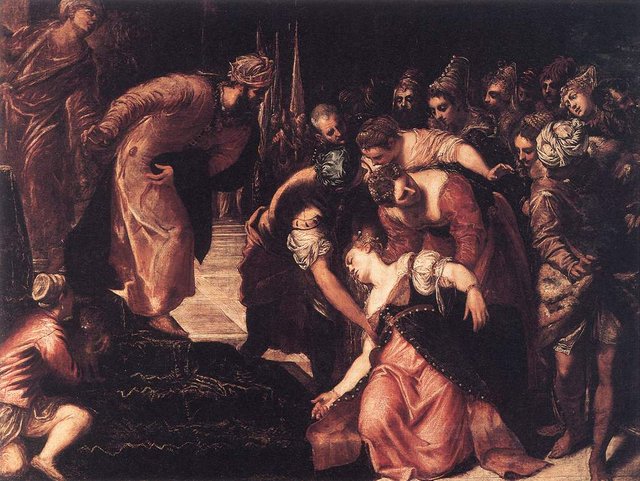
The story of Esther is not so well known, and it does not involve a lecherous old man’s lust for a younger woman. Esther is a beautiful young orphan who is chosen by the Persian Emperor Ahasuerus to be his new queen in place of the unruly Vashti:
Then said the king’s servants that ministered unto him, Let there be fair young virgins sought for the king: And let the king appoint officers in all the provinces of his kingdom, that they may gather together all the fair young virgins unto Shushan the palace ... So Esther was taken unto king Ahasuerus into his house royal ... And the king loved Esther above all the women, and she obtained grace and favour in his sight more than all the virgins; so that he set the royal crown upon her head, and made her queen instead of Vashti. (Esther 2:2-3 ... 16-17)
The only hint of sexual impropriety in this tale occurs during the climax. Esther risks her own life to intercede with the king on behalf of her people, the Jews, who are threatened with annihilation at the hands of Ahasuerus’s wicked vizier Haman:
Then Esther the queen answered and said, If I have found favour in thy sight, O king, and if it please the king, let my life be given me at my petition, and my people at my request: For we are sold, I and my people, to be destroyed, to be slain, and to perish ... Then the king Ahasuerus answered and said unto Esther the queen, Who is he, and where is he, that durst presume in his heart to do so? And Esther said, The adversary and enemy is this wicked Haman. Then Haman was afraid before the king and the queen.
And the king arising from the banquet of wine in his wrath went into the palace garden: and Haman stood up to make request for his life to Esther the queen; for he saw that there was evil determined against him by the king. Then the king returned out of the palace garden into the place of the banquet of wine; and Haman was fallen upon the bed whereon Esther was. Then said the king, Will he force the queen also before me in the house? As the word went out of king's mouth, they covered Haman’s face.
And Harbonah, one of the chamberlains, said before the king, Behold also, the gallows fifty cubits high, which Haman had made for Mordecai, who spoken good for the king, standeth in the house of Haman. Then the king said, Hang him thereon.
So they hanged Haman on the gallows that he had prepared for Mordecai. Then was the king’s wrath pacified. (Esther 7:3-10)
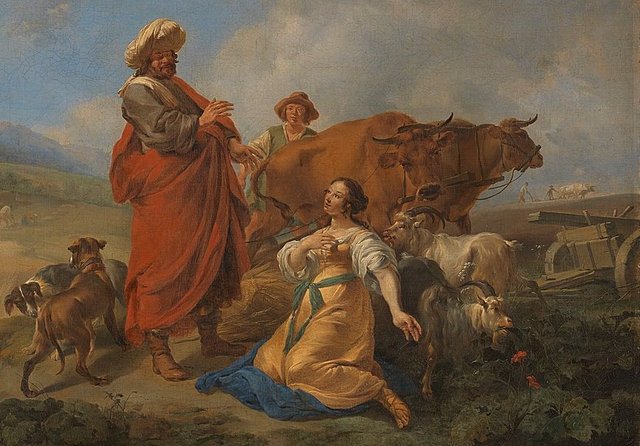
The Biblical tale of Ruth inverts the relationship of Susannah and the Elders by making the older man the object of the younger woman’s advances.
Then Naomi her mother in law said unto [Ruth], My daughter, shall I not seek rest for thee, that it may be well with thee? And now is not Boaz of our kindred, with whose maidens thou wast? Behold, he winnoweth barley to night in the threshingfloor. Wash thyself therefore, and anoint thee, and put thy raiment upon thee, and get thee down to the floor: but make not thyself known unto the man, until he shall have done eating and drinking. And it shall be, when he lieth down, that thou shalt mark the place where he shall lie, and thou shalt go in, and uncover his feet, and lay thee down; and he will tell thee what thou shalt do.
And she said unto her, All that thou sayest unto me I will do.
And she went down unto the floor, and did according to all that her mother in law bade her. And when Boaz had eaten and drunk, and his heart was merry, he went to lie down at the end of the heap of corn: and she came softly, and uncovered his feet, and laid her down. And it came to pass at midnight, that the man was afraid, and turned himself: and, behold, a woman lay at his feet.
And he said, Who art thou? And she answered, I am Ruth thine handmaid: spread therefore thy skirt over thine handmaid; for thou art a near kinsman. And he said, Blessed be thou of the Lord, my daughter: for thou hast shewed more kindness in the latter end than at the beginning, inasmuch as thou followedst not young men, whether poor or rich. And now, my daughter, fear not; I will do to thee all that thou requirest: for all the city of my people doth know that thou art a virtuous woman. (Ruth 3:1-11)
According to the Ruth Rabbah, a Rabbinical commentary on this book, Boaz was eighty and Ruth forty when they were married (Ruth Rabbah 6:2).
HCE and Issy
One of the most important motifs in Finnegans Wake is the ambivalent relationship between HCE and his daughter Issy. As the father ages he finds himself less and less attracted to his wife ALP, who is no longer the beautiful young woman he fell in love with. At the same time, however, as his daughter Issy matures, she comes to resemble more and more the young woman her mother once was. HCE finds himself falling in love with his own daughter—at least on some deep unconscious level. This incestuous relationship is probably the source of much of HCE’s guilt, which is another major theme in the novel. It also sheds some light on Issy’s schizophrenic nature. She is at once the innocent daughter—Papa’s little lump of love, to borrow a phrase from Ulysses—and the wicked temptress.
Voyeurism, indecent exposure, defecation and micturition feature prominently in HCE’s guilt.
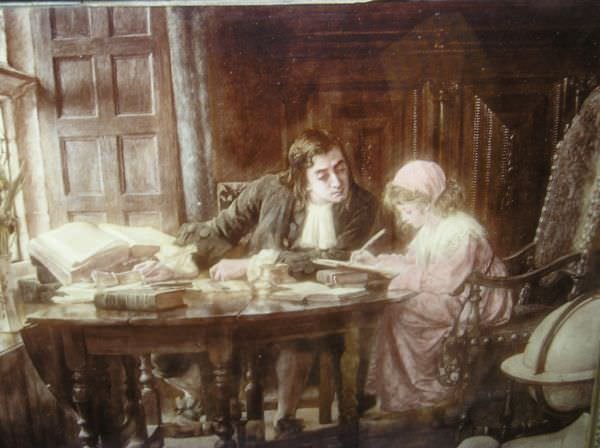
Jonathan Swift
In the four preceding clauses of this paragraph, Joyce introduced us to a number of historical and literary characters who play pivotal roles in Finnegans Wake: Tristan (and Tristram Shandy), the Duke of Wellington, Mark Twain (and his creations Tom Sawyer and Huckleberry Finn), Lawrence O’Toole (and Lawrence Sterne, the creator of Tristram Shandy), St Patrick, and Charles Stewart Parnell. To this list we can now add the imposing figure of Jonathan Swift.
Swift was born in Dublin in 1667 and is renowned for his literary works, most notably Gulliver’s Travels, but it was Swift’s relationships with a number of younger women that particularly interested Joyce. In Finnegans Wake, two of these women—Esther Johnson and Esther Vanhomrigh—repeatedly stand in for the two sides of Issy’s split personality.
I do not know what Joyce’s principal source was for Swift’s biographical details. Walter Scott’s Life of Jonathan Swift was written in 1814 to accompany his nineteen-volume edition of Swift’s works, and is as fine a place as any to begin one’s study of the Dean’s life. Other useful sources that Joyce may have consulted include the Dictionary of National Biography and The Encyclopaedia Britannica (Eleventh Edition of 1911), a set of which Joyce is known to have had.
After leaving College, Swift became secretary to the statesman William Temple on his estate Moor Park, in Hertfordshire. Swift remained with Temple for the best part of ten years (1689-99)—with brief interludes, during which he received a Master’s degree from Oxford and served as Prebend of Kilroot near Belfast.
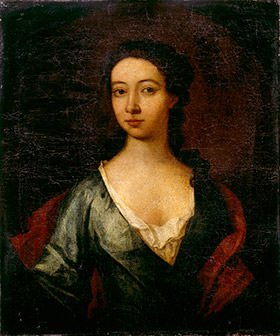
It was at Moor Park that Swift first met Esther (or Hester) Johnson, whose mother was a companion of Temple’s sister. She was only eight years old—Swift was twenty-two—but he took her under his wing and was her tutor for a time. When he met her again in 1696, following his brief stint as Prepend of Kilroot, she had matured into a beautiful young woman.
After Temple’s death in 1699, Swift moved to Ireland, where he pursued a literary career while serving as a clergyman in the Church of Ireland. At Swift’s invitation, Stella—his pet name for Esther—moved to Dublin in 1702, accompanied by another member of the Temple household, Rebecca Dingley. For the next five years they lived with, or close to, Swift, though the precise nature of his relationship with Stella is still a mystery.
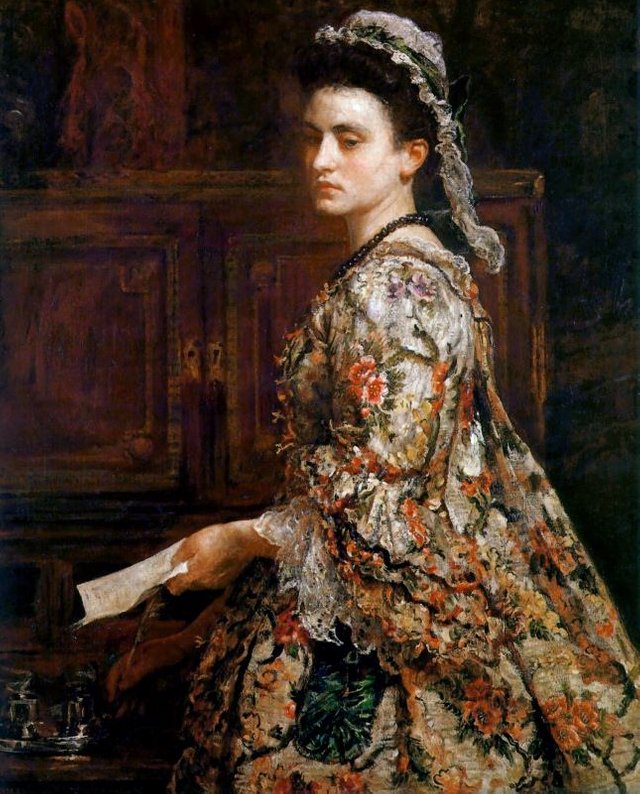
In 1707, when Swift turned forty, a new woman entered his life. Esther Vanhomrigh—or Vanessa, to use the now-popular name Swift created for her—was the daughter of a Dutch merchant and an Irishwoman, and was raised in Celbridge Abbey, not far from Dublin. At her first meeting with Swift, she became enamoured of the older man and pursued him relentlessly. He tutored her for a while, just as he had tutored Stella. When Swift returned to Ireland in 1713 after having spent several years in London, Vanessa followed him, settling in Celbridge. She was now an orphan in her mid-twenties. Unlike the Stella-Swift relationship, in which Swift was the hunter and Stella the prey, Vanessa was the prime mover of this relationship.
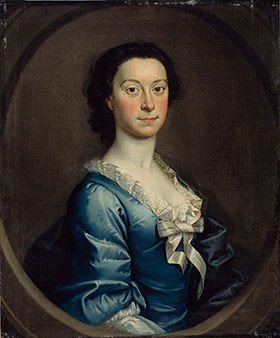
Swift somehow managed to juggle both women in his life for about seventeen years, during which time he became Dean of St Patrick’s Cathedral. He finally broke with Vanessa in 1723, when she demanded that he leave Stella. She died within a few weeks—of a broken heart, if such a thing is possible, of tuberculosis, if it’s not. Swift is rumoured to have secretly married Stella in 1716, but even this is not known for certainty.
Two lasting literary works survived this extraordinary folie à trois: Journal to Stella and Cadenus and Vanessa. Vanessa also tried her hand at writing. Among Swift’s collected works is the following rebus by Vanessa on the name Jonathan Swift:
Cut the name of the man who his mistress deny’d,
And let the first of it be only apply’d
To join with the prophet who David did chide;
Then say what a horse is that runs very fast;And that which deserves to be first put the last;
Spell all then, and put them together, to find
The name and the virtues of him I design’d.
Like the patriarch in Egypt, he’s vers’d in the state;
Like the prophet in Jewry, he’s free with the great;
Like a racer he flies, to succour with speed.
When his friends want his aid, or desert is in need.
(A Rebus by Vanessa)
Here Vanessa creates the name Jonathan from the first syllable of Joseph and the two syllables of Nathan, just as Joyce does with nathandjoe. Swift replied with a piece of doggerel of his own: The Dean’s Answer.
It is hardly a coincidence that Swift was, at one time or another, the tutor of each of the two women in his life. Swift’s opinion of the teacher-pupil relationship in his poem, recorded in Cadenus and Vanessa, is apt:
Each girl, when pleased with what is taught,
Will have the teacher in her thought.
The relationship between an elderly male teacher and a much younger female pupil figures prominently in Finnegans Wake.
Swift and Finnegans Wake
James Atherton, one of the pioneers in the field of Wakean research, summed up the widespread consensus among his fellow scholars that Swift had a pivotal role to play in the novel:
“The influence of Swift on Joyce,” wrote L. A. G. Strong, “goes beyond likeness and coincidence. It is assimilated into the fabric of the mind. The little language of the Journal to Stella contributed to the vocabulary of Finnegans Wake, but the allusions to Swift’s life are deeply woven into the book’s texture.” Edmund Wilson has made almost the same comment, while Harry Levin says that the “great prose master of Dublin who has left his mark on nearly every page of Joyce’s book. Swift ... likewise presides over the mythology of Finnegans Wake. He oscillates back and forth between the ‘sosie sesthers’, Stella and Vanessa. His unmistakable voice breaks in when we least expect it nagging Esther Johnson in as high a key as Yeats’s Words upon the Windowpane. His pet name for her, ‘Ppt’, is the father’s name for his daughter, and the girl’s for her doll ...” Indeed almost every writer who has dealt at any length with Finnegans Wake has commented on the frequent allusions to Swift it contains. (Atherton 114)
Atherton also noted that Swift’s role in Finnegans Wake is multifarious:
There are three main male characters in Finnegans Wake : H.C.E. and his two sons, Shem and Shaun. Swift is identified with all three. As Draper he is Shem, the writer of Swift’s Drapier Letters transmuted to The Crazier Letters (104.14); as the Dean he is Shaun; and as himself he is H.C.E. ... The identification of H.C.E. with Swift has frequently been made. Swift, like Lewis Carroll and King Mark of Cornwall, stands for the old man with child lovers. (Atherton 115)
Further Literary Allusions
We are not quite done with this brief clause. I mentioned earlier that it contained a number of allusions drawn principally from English literature.
All’s fair in vanessy not only echoes the proverb, All is fair in love and war (attributed to the writer John Lyly, though he did not use those exact words), but also alludes to Vanity Fair. This is both an allegorical location in John Bunyan’s novel The Pilgrim’s Progress and the title of William Makepeace Thackeray’s most famous novel. Thackeray gave Vanity Fair the subtitle A Novel without a Hero, but to make up for the lack of a hero, Thackeray provided two heroines: the wicked Rebecca Sharp and the virtuous Amelia Sedley. And there you have the two sides of Issy again.
The phrase in vanessy also echoes the name of the Scottish city of Inverness, the location of Macbeth’s castle in William Shakespeare’s Scottish play. In the very opening scene of Macbeth, the three witches, or three weird sisters, as they are called, intone the words:
Fair is foul, and foul is fair (Macbeth 1:1:11)
which neatly encapsulates Issy’s conflicted nature.
During his prebendaryship at Kilroot, Swift had engaged in a brief flirtation with a young woman from Belfast, Jane Waring—or Varina, as he called her. Her brother had studied with Swift at Trinity College in Dublin. In 1696 Swift actually proposed to her, but nothing came of it. Perhaps his renewed acquaintance with Stella in the same year altered his affection. Four years later, when Swift’s prospects had improved, Waring revived the suit, but Swift poured cold water on the idea.
Just as Stella and Vanessa are sometimes joined by Varina, so Issy’s fractured psyche sometimes splits into three weird sisters. This mirrors the way in which her two brothers, Shem and Shaun, are sometimes accompanied by a third, the Oedipal figure who embodies both their natures.
Shakespeare can also be connected to the story of Susannah and the Elders. His daughter, Susanna Hall, was wrongfully accused of lechery. Her accuser was excommunicated for his troubles, but kept his head.
Oh, what a tangled web he weaves.
References
- James S Atherton, The Books at the Wake: A Study of the Literary Allusions in James Joyce’s Finnegans Wake, Southern Illinois University Press, Carbondale IL (1959, 2009)
- Joseph Campbell, Henry Morton Robinson, Edmund L Epstein (editor), A Skeleton Key to Finnegans Wake, New World Library, Novato CA (2005)
- Hugh Chisholm (editor), Encyclopaedia Britannica, Eleventh Edition, Volume 26, Cambridge University Press, Cambridge (1911)
- Richard Ellmann, James Joyce, Oxford University Press, Oxford (1959, 1982)
- David Hayman, A First-Draft Version of Finnegans Wake, University of Texas Press, Austin TX (1963)
- James Joyce, Finnegans Wake, The Viking Press, New York (1958, 1966)
- Sidney Lee (editor), Dictionary of National Biography, Volume 54, Smith, Elder & Co, London (1898)
- Harry Levin, James Joyce, a Critical Introduction, Faber & Faber, London (1944)
- Danis Rose, John O’Hanlon, The Restored Finnegans Wake, Penguin Classics, London (2012)
- L A G Strong, The Sacred River: An Approach to James Joyce, Pellegrini & Cudahy, New York (1951)
- Jonathan Swift, Thomas Sheridan (editor), John Nichols (editor), The Works of the Rev. Jonathan Swift, D. D., Volume 7, Nichols & Sons, London (1801)
- Edmund Wilson, The Wound and the Bow: Seven Studies in Literature, Houghton Mifflin Company, Boston MA (1941)
Image Credits
- A Bust of Jonathan Swift in the Long Room of Trinity College Library: Wikimedia Commons, Louis Francois Roubiliac (sculptor), © Rob Hurson, Creative Commons License
- Susanna and the Elders: Tintoretto (artist), © Web Gallery of Art, Fair Use
- Esther before Ahasuerus: Tintoretto (artist), © Web Gallery of Art, Fair Use
- Ruth and Boaz: Wikimedia Commons, Nicolaes Pieterszoon Berchem (artist),
- Jonathan Swift Tutoring Hester Johnson: Margaret Isabel Dicksee (artist)
- Stella?: A Possible Portrait of Esther Johnson, © National Gallery of Ireland, NGI 599, Fair Use
- Vanessa, A Fancy Portrait by John Millais: Wikimedia Commons, John Everett Millais (artist), Public Domain
- Vanessa?: A possible Portrait of Esther Vanhomrigh, © National Gallery of Ireland, NGI 1643, Fair Use
Useful Resources
- FWEET
- The James Joyce Scholars’ Collection
- FinnegansWiki
- Annotated Finnegans Wake (with Wakepedia)
- James Joyce’s Family Tree

I love this type of artistic work ☺
Hi my dear lovely friend @harlotscurse..
How are you?..dear your very well post...
& great post....i really love your all post...& I look forward to each of your posts... thanks for sharing.. ♥…
Thank you my dear lovely friend @harlotscurse
Excellent post good article dear @harlotscurse thank you for shere this post.....
very well post and great writing friend.
I really enjoy your awesome post,
thank you for this post sharing with us
Good job, my brother, once again, mix the biblical images with the history of Ireland and much more. I respect you, my dear friend. Greetings and have a successful day
Wow very good post i appreciate your writing .. dear @harlotscurse
Thank you for support @harlotscurse
seriously thank you for your information on history, always up to date with you my friend. regards
Wow lovely post my dear friend @harlotscurse i like your article thank you for shere .......?
A great publication with an impeccable job and I have already lost count of how many high quality publications you have made
Excellent post good article dear @harlotscurse thank you for shere this post